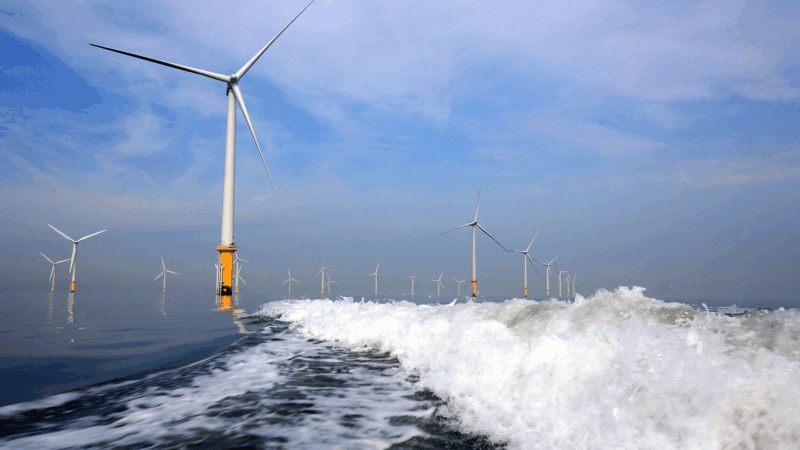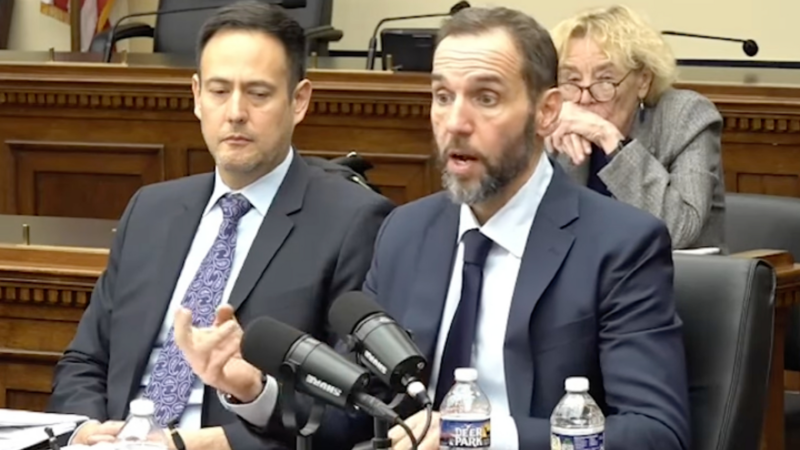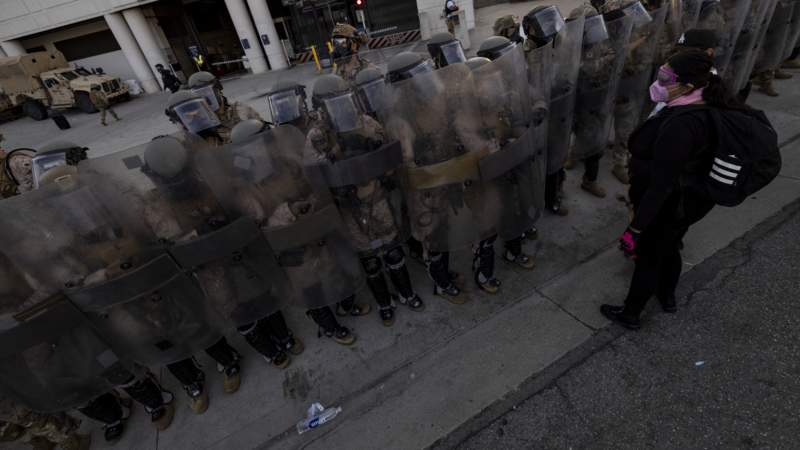A wind project is stalled in New York. Experts worry about impacts across the U.S.
U.S. Secretary of the Interior Doug Burgum has ordered a halt to an offshore wind project near the coast of Long Island. Today, Equinor, the Norwegian energy company that owns and operates the project, announced it is complying with the order and suspending all construction.
President Trump, a longtime critic of wind energy, issued a moratorium on new development of offshore wind projects, one of his first executive orders upon returning to the White House.
But Burgum’s decision escalates the Administration’s opposition to offshore wind because the multi-billion dollar project in New York already had its federal permits and had broken ground, says Robert Freudenberg, a vice president at the Regional Plan Association, an energy nonprofit in the New York metropolitan area.
”This really is next level offshore wind aggression,” Freudenberg says.
The offshore wind project, called Empire Wind 1, was supposed to supply power to 500,000 homes in New York. The federal lease for the project was signed during the first Trump administration in 2017. Much of the federal permitting for this project happened during the Biden administration.
In a letter to the Bureau of Ocean Energy Management (BOEM), the lead federal agency for permitting offshore wind projects, Burgum wrote that “approval for the project was rushed through by the prior administration without sufficient analysis.”
The letter did not give details about the alleged rush. The Interior Department did not respond to NPR’s request for comment. The idea that the review of this wind project was rushed is not supported by evidence, says Matthew Eisenson, senior fellow at Columbia University’s Sabin Center for Climate Change Law.
”BOEM spent two and a half years conducting an environmental review. The final product of that environmental review is an environmental impact statement that’s over 3000 pages long, with all of its appendices, and it’s very thorough,” Eisenson says. “ This rationale, it’s very suspect.”
Trump has often said, without evidence, that the offshore wind industry kills whales, writing about “the importance of marine life” in his January executive order.
Two years ago after a request from Congressional opponents of wind energy, the Government Accountability Office (GAO) began investigating whether the offshore wind industry kills whales. On Monday they issued their report. The GAO cites the expertise of the National Oceanic and Atmospheric Administration which says it “does not anticipate any death or serious injury to whales from offshore wind related actions.”
“So there’s no universe in which the GAO report would be used to substantiate the stop work order for Empire Wind 1,” says Kris Ohleth, executive director of the Special Initiative on Offshore Wind, a wind policy think tank.
The U.S. clean-energy industry is on pace for record growth this year. Wind energy makes up about 10% of the U.S. electricity mix — the largest single source of renewable energy.
But while the offshore wind industry was expecting to see important new projects this year like the Vineyard Wind 1 project in Massachusetts and the Revolution Wind project in Rhode Island, Ohleth says all offshore wind projects are now in jeopardy.
“It should send alarm bells, not just to the offshore wind industry, but to industries beyond offshore wind,” Freudenberg says, “that the federal government could choose to stop projects that had been approved and are underway at their whim.”
The halting of Empire Wind 1 disrupts a much-needed electricity supply to a region with growing power demands for things like data centers, says Kit Kennedy, managing director for power at the Natural Resources Defense Council. “ This is the kind of energy dominance that the U.S. needs. That the Trump administration should be supporting,” she says.
New York has a goal of developing 9,000 megawatts in offshore wind energy by 2035. That goal is now at risk, Eisenson says. New York Gov. Kathy Hochul wrote in a statement that Burgum’s order stands to threaten 1,000 union worker jobs.
“We can often think of these projects as out in the ocean, but the impacts are really felt in communities,” Freudenberg says.
U.S. military strikes 5 more alleged drug boats, killing 8
The U.S. military says it struck five alleged drug-smuggling boats over two days. The attacks killed eight people, while others jumped overboard and may have survived. U.S. Southern Command did not reveal where the attacks occurred.
Capitol riot ‘does not happen’ without Trump, Jack Smith told Congress
Former special counsel Jack Smith also described President Trump as the "most culpable and most responsible person" in the criminal conspiracy to overturn the 2020 election results, according to a transcript of Smith's closed-door interview with the House Judiciary Committee.
Trump will drop push for National Guard deployments in Chicago, LA and Portland, Ore.
Courts blocked troops from deploying in Chicago and Portland, Ore., and the Los Angeles deployment effectively ended after a judge blocked it earlier this month.
What Stranger Things gets right about wormholes
The final episode of fifth season of the Netflix series Stranger Things is out this week, and the concept of a wormhole figures largely into it. While the show is a work of fiction, theoretical wormholes have making appearances for decades not only in science fiction but in actual science.
Photos: The world welcomes the new year
As fireworks light the sky and crowds count down together, communities around the globe welcome 2026.
Meet five new species discovered in 2025
A bumpy snailfish, Andean mouse opossum and ancient sea cow were just some of the many species described in 2025.







